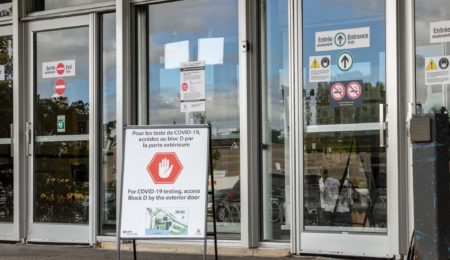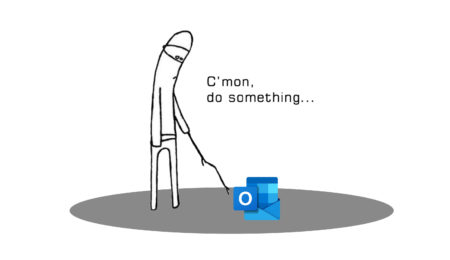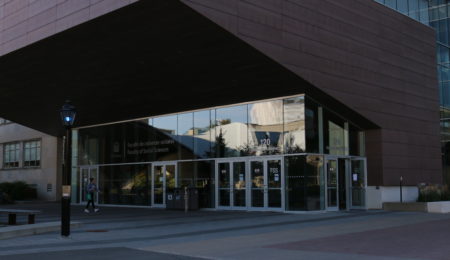The Fulcrum spoke to women engineers and students to hear their side of engineering
University of Ottawa president, Jacques Frémont, recently spoke out against a Globe and Mail article that listed the U of O as one of the worst universities in Ontario for gender-pay disparity. Since then, a number of questions about the representation of women in teaching and leadership roles at the university have arisen.
This has since led to questions about the representation of women in teaching and leadership roles at the university. As of the fall of 2019, only 499 out of 1,223 professors at the U of O were women. In terms of percentage, this equivocates to about 40.8 per cent of the university’s professors. In comparison, the university’s student body is overwhelmingly female with 21,904 students in 2020 identifying as female compared to 14,577 identifying as male — the student body is over 60 per cent female.
In the faculty of engineering specifically, there are 132 professors yet only 31 are women — a mere 23.5 per cent of the faculty’s professors. The Fulcrum reached out to all of them to speak about their experience in a particularly male-dominated field.
Beyond the numbers, the experiences of these women — and also of female students in engineering — is an important indicator of the U of O’s gender balance.
Finding inspiration
Breaking into a STEM career as a woman has its own set of difficulties. But despite being a minority in the field, many women entered theirs after finding inspiration from people they know.
Beatriz Martin-Perez, an associate professor in civil engineering, says she looked up to her father, who was also a civil engineer, as well as her family who supported her career.
“It’s true that I haven’t had a preference [of mentoring] to my career. But the men that have been [mentors], or I consider mentors they have always been very supportive,” she said.
Martin-Perez recalls feeling assured and comfortable as a woman in engineering, only feeling disadvantaged during a few instances in her graduate studies. However, she’s always felt confident in doing what she wants to achieve and feels like her work as a woman in STEM is rewarding.
For Martin-Perez, one of the biggest challenges was finding a balance as both an academic and a mother.
“It’s more difficult [as a mother] to try to balance work life with family life, even if your partner’s time is not the same,” she said. “And I’ve seen this with my male colleagues. Sometimes you’re walking across the campus and all you’re thinking is ‘what can I put for dinner?’ ”
As a valuable member of the faculty of civil engineering, she encourages young women interested in STEM to maintain a close network of friends and support as she did.
Like Martin-Perez, other women in engineering at the U of O had some sort of inspiration behind entering a STEM career.
Marina Sokolova, an electrical engineering professor, focuses on big data analytics, which is the study of large-scale data to find patterns. She is also the first woman ever to be awarded the Distinguished Service Award from the Canadian Artificial Intelligence Association (CAIAC) since its establishment in 1990.
Sokolova received the award for outstanding service and dedication to the Canadian AI (artificial intelligence) conference. According to CAIAC, Sokolova “sent a personalized email to every single Chair of Computer Science and related departments in Canada” in order to increase participation in the conference.
When asked about her experience as a woman in mathematics and artificial intelligence, Sokolova said she never had any issues, however was consistently one of the only women: “I worked as one woman among many men, I supervised their work, so they were always respectful to me. At the Mila Institute, I was one woman with a PhD among many men.”
Being the only woman to ever receive the distinguished service award is another indicator that women still have many ‘firsts’ to accomplish in engineering to achieve gender parity.
The glass obstacle course for women
Ivy Bourgeault, a sociology and anthropology professor at the U of O, has done significant research on women in STEM fields. Throughout her career, she has researched gender disparity in engineering and the stigmas surrounding it.
“I think everybody needs to focus on women in science. It is particularly challenging for women in the natural sciences, physics, biochemistry, etc,” said Bourgeault.
“Science is the endeavour of creating knowledge. If we only uncover knowledge of interest or generated by one very small section of the population, that is upper-class, educated, white men, we’re really obscuring the bulk of the knowledge.”
“Women ask different questions because they come at science from a different set of experiences.”
Bourgeault started her career in a bachelor’s degree of mathematics, ultimately leaving for social sciences as she was interested in the broader issues that social sciences bring forward.
She has since studied the concept of the “glass obstacle course.”
“The glass obstacle course is not so much that we have a glass ceiling anymore, but we’ve made it much more difficult for women to fit into an academic environment that was created for white, well-off men. That’s how academia was created.”
The glass obstacle course is a feminist metaphor for the challenges that women face in academia. It takes the commonly-known glass ceiling concept and insists that women now face things put in the way to stop them from advancing their careers.
Making an impact on the future
While many women in engineering have broken down barriers, that in turn leaves room for the next generation to change the gender gap in science.
At the U of O, one of the main supports for young female students in engineering is the club, Women in Sciences and Engineering (WISE).
“WISE is Women in Science and Engineering. We are a group of undergraduate students working towards breaking the stereotypes around women in STEM.”
WISE aims to increase the percentage of women who study engineering or science at the post-secondary level. One of their main programs involves visiting high schools to promote the U of O’s science programs.
In an email to the Fulcrum, WISE said that, “through our High School Outreach program, our VP External attends participating high schools with a few WISE member volunteers and introduces to the female high school students the many fields of STEM they can pursue, their own experiences as women in these fields, and the amazing paths STEM may lead to.”
The goal of increasing female representation in engineering is one that many professors and WISE continue to themselves focus on. And many incoming engineering students hold the same priorities.
Claire Malleau, a first-year chemical engineering student at the U of O, said she wanted to change the way women are viewed in engineering and pave a way for women in STEM.
“This semester, five of my six professors are male but last semester I had a female professor and I found it was really helpful to have a woman as my first professor and mentor.”
Malleau hopes to earn her PhD in dedication to her father, who gave up the opportunity to pursue his own PhD to support Malleau as a young child. Her professional goals include “ending the stigma that engineering is a male-dominated field and encouraging other women to pursue engineering.”
When Malleau was accepted into the engineering program at the U of O, she was asked by someone what her father would think of that — a comment which took her back.
She said that it shows how much harder women have to work, especially in engineering.
“[I] was over the moon that I got in and someone’s first comment was what my father would think about that career choice.”
Annabelle Many, a first-year biomedical and mechanical engineering student said she “really looked up to the female professors that taught me and it created this really nice feeling of inclusion.”
Many said that seeing “incredibly smart women in these positions” helped introduce her to engineering and feel welcomed.
During one of her first semester courses, a female student was interrupted by a male student, resulting in the professor stepping in to say that, “she [the student] was speaking, you can speak after without interrupting her.”
These experiences for young, female, engineering students are important to foster a sense of community among the women and encourage them to stay in the field of engineering.





